| HOME |
|---|
CAPRICORNUS
The Sea Goat
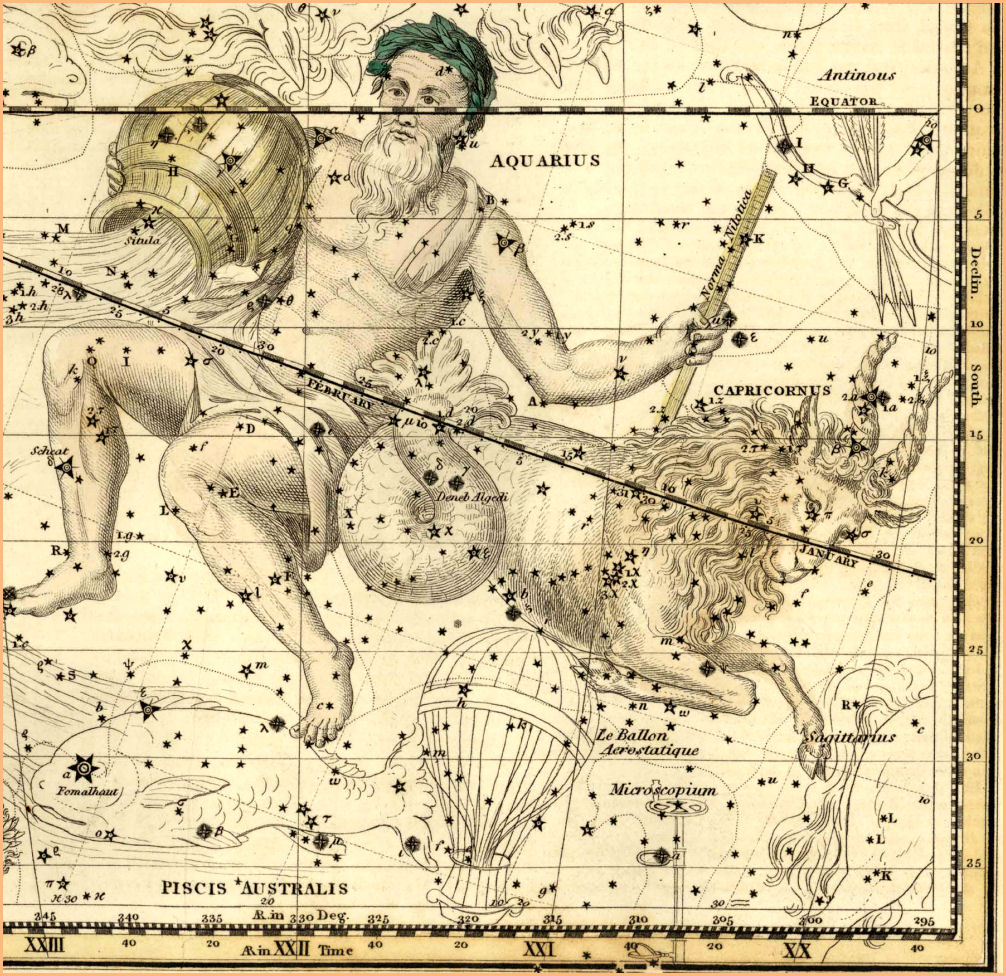
Capricornus - Celestial Atlas by Alexander Jamieson - 1822
| HOME |
|---|

The constellation Capricornus, the sea goat, is depicted as a goat with the tail of a fish, and has been so for over three thousand years. The origins of this unlikely and improbable creature are lost in antiquity. Some say the figure of the goat was given the tail of a fish because it is in an area of the sky historically known as the sea. Other tales refer to the ancient Greek god Pan, half goat, half man, who leaped into the sea and disguised himself as half goat, half fish, to escape the monster Typhon. Whatever the source of the figure, it is recognized as a sea goat to this day.
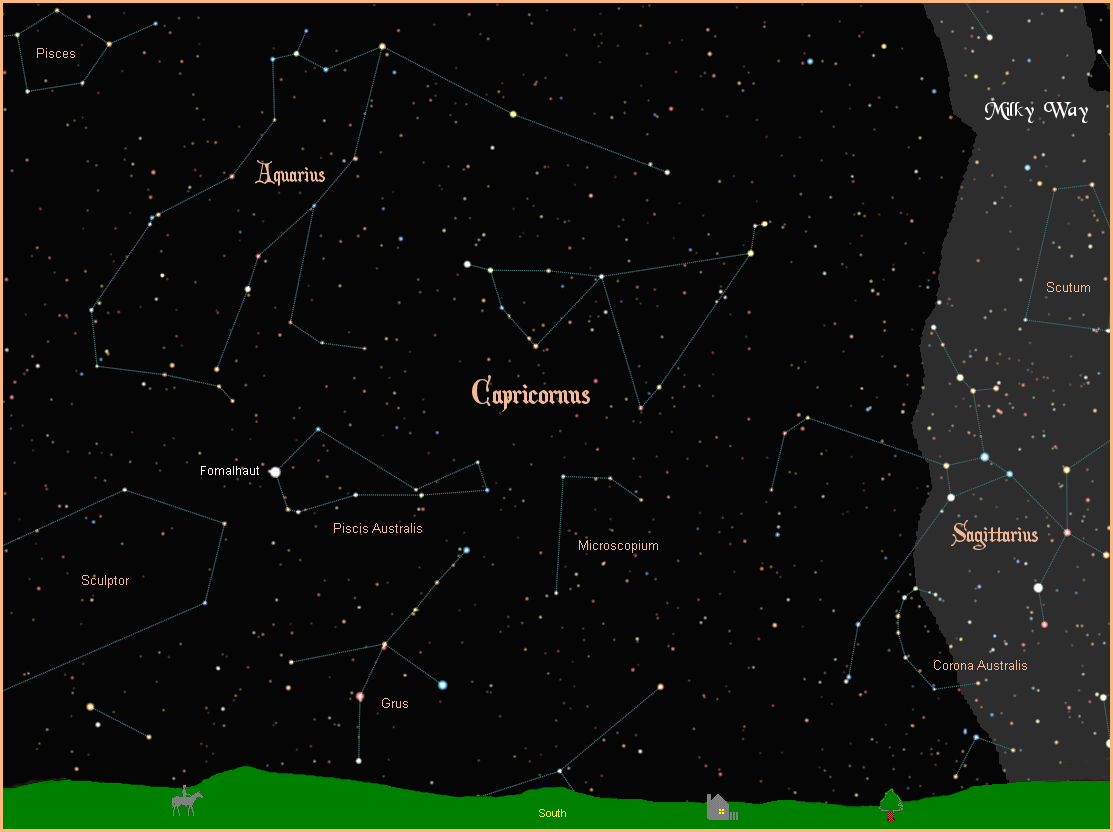
Alpha Capricorni is only the third brightest star in the constellation, given the alpha designation because it represents the head of the figure. It is called Al Giedi, Arabic for the goat. It is an optical binary system, two stars that appear close together (almost as one to the naked eye) from our two dimensional perspective on Earth, but in the third dimension (distance) they are very far apart. The star leading the way across the sky is Prima Giedi (Alpha1 Capricorni), very far away at a distance of 690 light years. It is a G3I yellow supergiant with a magnitude of 4.3. Secunda Giedi (Alpha2 Capricorni) is very much closer, at a distance of 109 light years. It is a G8III yellow giant with a magnitude of 3.58.
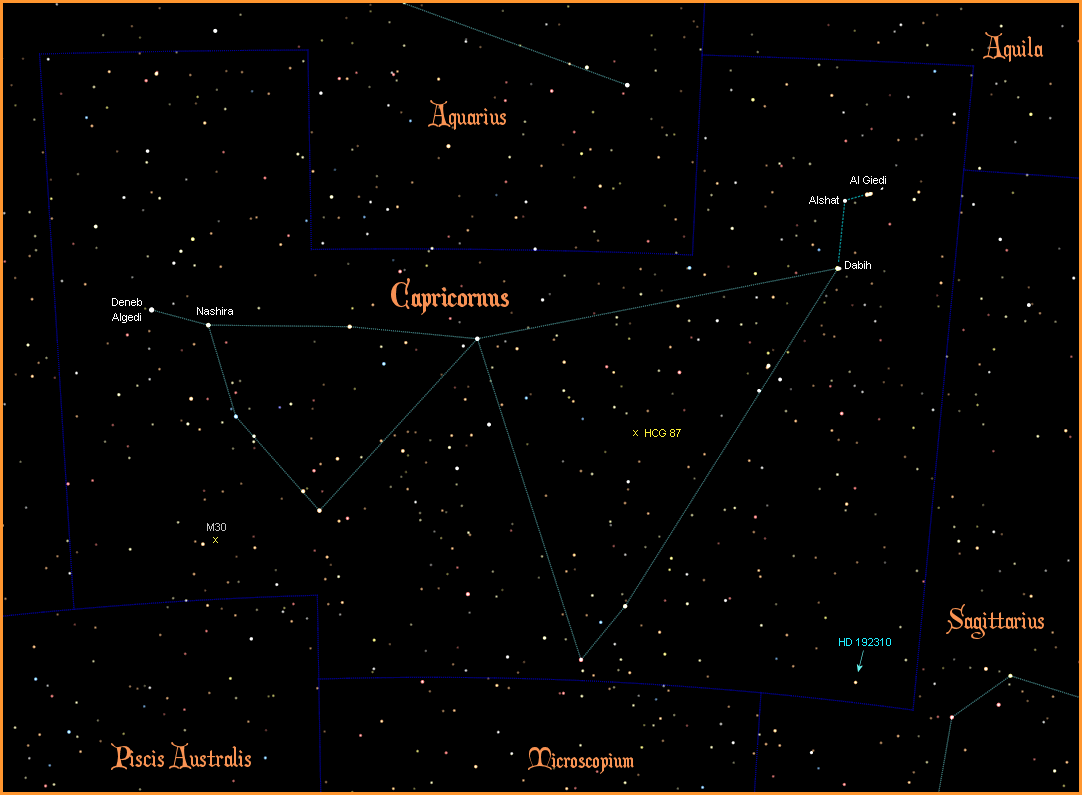
Beta Capricorni is the second brightest star in Capricornus, named Dabih, meaning butcher, presumably because goats were historically a prime source of food and routinely butchered for their meat. Through a small telescope Dabih can be resolved into two separate stars. The brighter star is Dabih Major (Beta1 Capricorni), with a magnitude of 3.05, and classified as a K0III orange giant. The dimmer of the pair is Dabih Minor (Beta1 Capricorni), with a magnitude of 6.09, and classified as an A0III blue/white giant.. But the story doesn't end there. Both stars are themselves composed of multiple stars, with a confirmed total of five, and possibly more component stars all gravitationally bound to each other, making up a very complicated star system, all gathered together about 328 light years away.
Gamma Capricorni is named Nashira, Arabic for bearer of good news. What that good news might be is anybody's guess. It is classified as an A7III white giant, about 139 light years away, with a magnitude of 3.68.
Delta Capricorni is named Deneb Algedi, Arabic for tail of the goat. Although given the fourth letter of the Greek alphabet, it has a magnitude of 2.87, and is the brightest star in the constellation. It is an eclipsing binary, two stars lined up so that from our perspective they pass directly in front of (eclipse) each other in their orbits. The primary star, (Delta Capricorni A), is an A7III white giant. The dimmer companion star has proven difficult to analyse and remains a mystery.
The last of the named stars is Nu Capricorni, named Alshat, meaning the sheep to be slaughtered, possibly by nearby Dabih (the butcher). It is a B9IV blue/white subgiant, magnitude 4.7, about 252 light years away.
Six stars have been found to possess planets so far in Capricornus. The stars are all distant and beyond naked eye visibility, with massive gas giants many times larger than Jupiter - with one exception. Star HD 192310 is only 29 light years away, and has a magnitude of 5.73, right on the edge of naked eye visibility. It is a K2V orange main sequence star with two planets in orbit, each about one twentieth the size of Jupiter. For more information on these and other extrasolar planets, visit NASA's New Worlds Atlas, and The Open Exoplanets Catalogue.
Capricornus is not rich in deep sky objects, although it does contain a globular cluster discovered by Charles Messier in 1764. Dubbed M30, it is also known as NGC 7099. With a magnitude of 6.9, it is visible in smaller telescopes. The cluster is 29,400 light years away, and 93 light years across. It is thought to be 13 billion years old, and contain several hundred thousand stars.
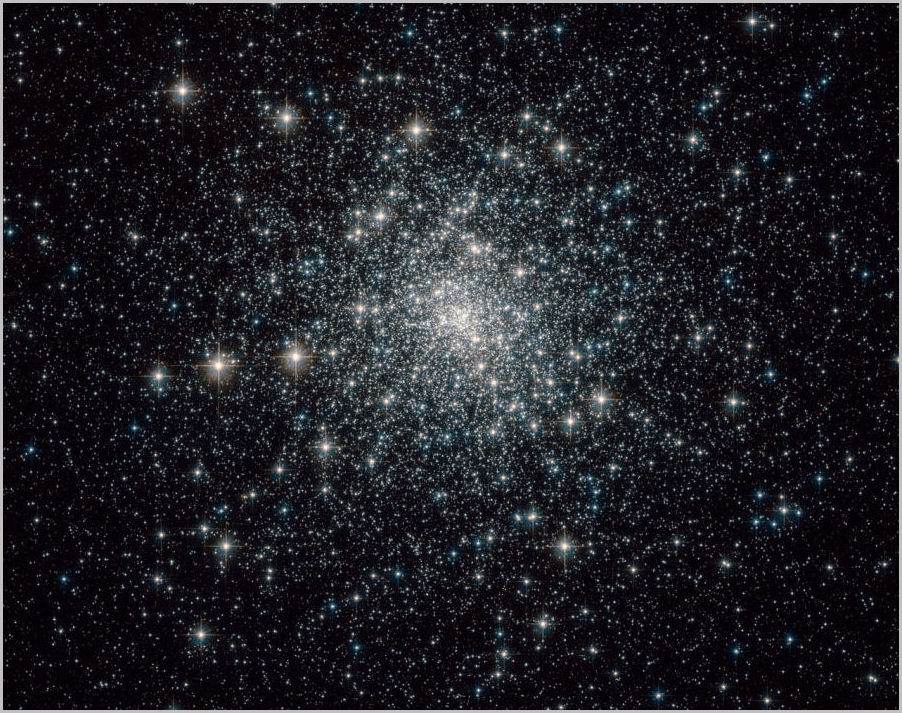
Capricornus also contains a grouping of four galaxies unusually close to each other, called the Hickson Compact Group 87 (HCG 87). The galaxies are close enough together their gravitational fields are significantly affecting each other. Residing very far away at a distance of 400 million light years, the group has a magnitude of only 15, and is visible only in large telescopes.
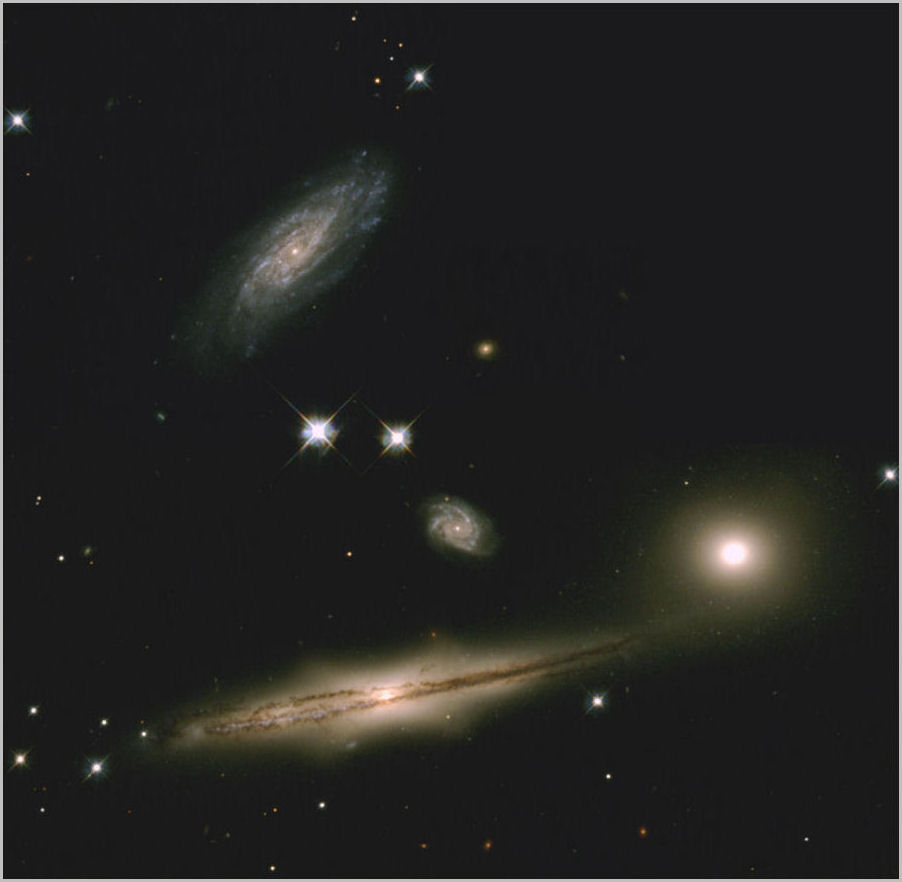
The Tropic of Capricorn is an imaginary line that circles our planet at 23.5 degrees south latitude, the precise latitude where the Sun is directly overhead on the winter solstice. Occurring on December 22, the winter solstice is the moment the Sun stops moving south in our sky, and begins to move north again. At that moment, the Sun has traditionally been passing through the constellation Capricornus, so this imaginary line marking the Sun's southerly limit was named after the astrological sign associated with the constellation: Capricorn.
However, because of a slight wobble in Earth's rotation known as precession, on December 22 the Sun now passes through the constellation Sagittarius. The cycle of precession lasts 20,000 years, during which time the Sun will pass through all the 13 constellations of the ecliptic (the path the Sun, Moon and planets follow through the stars), to ultimately end up back in Capricornus, and start the cycle all over again.
|
|
|
|
|
|